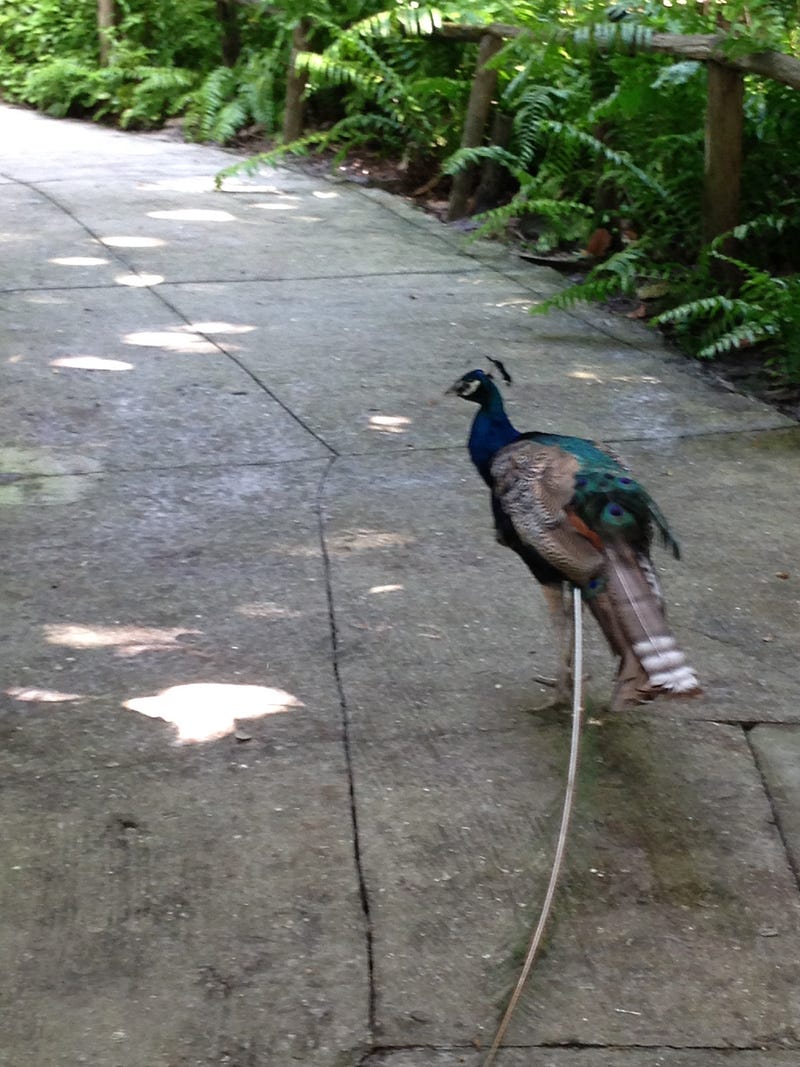
The last two articles were a bit heavy. There was a lot of information to process and they were my two longest to date. So, how about we take a breather and look at something fun this time around.
If it wasn’t clear from my Galápagos retrospective, I really enjoy observing mating and courtship rituals in animals. They include some of the most fascinating and bizarre behaviors in nature. It was while filming one local instance of this that I was also able to catch a bit of vocalization from another bird (listen for it at the 0:13 mark).
These flamingos have been at the Everglades Wonder Gardens in Bonita Springs, Florida for decades. The sign says they are Greater flamingos, Phoenicopterus roseus., which is a bit odd since that species is native to parts of Africa, Asia, and southern Europe. It would seem more likely that they are the more local American flamingo, Phoenicopterus ruber. That said, I’m not as interested in which species they are as compared to what they are doing.
There isn’t a lot of sexual dimorphism (visual differences between males and females) in these particular birds, so it’s difficult to pinpoint, but it seems clear that they are participating in some kind of dominance display. Watch how quickly it changes from an almost synchronized, dance-like behavior to mock fighting. Eventually, the smaller individual demurs and backs off.
The honk and cry at the end comes from Picasso, a male Indian peafowl, Pavo cristatus. He would emit that call constantly for several months. I suspect that it was a combination territorial and mating call, as he was not the only peafowl at the Wonder Gardens. Before he arrived, there was already a peahen name Priscilla. She tended to avoid Picasso as much as possible, though not always successfully.
She maintained a supreme indifference towards him despite his best efforts at displaying in front of her. Notice how he switches between facing her with those long display feathers and facing away and shaking his tail. Since then, mating season has passed and Picasso has molted every one of his long feathers.

One of the reasons why these displays are so interesting, is because many of them contain both a visual and an auditory component. This is true for the flamingos, as well as the albatross in the Galápagos. It’s even true for the peafowl, though it’s much more subtle. If you didn’t notice it, go back and watch again.
Picasso doesn’t use any vocalizations in that video, but the movement of his long display feathers creates a distinctive rustling noise.
Nature in general and animal behavior specifically are multifaceted and multilayered. Keep looking and listening and you will be able to see beyond the immediately obvious. At first glance, these two videos look like simple ‘dance’ behaviors in two different species. However, taking a second or third look can allow you to see the different make up of each behavior, their similarities and differences. It is those things, just underneath the surface, that I find the most interesting and that I feel compelled to share with you, so you can learn to see them too.
We’ve talked a lot about birds recently. Part of that is because they are further removed from my formal area of study, and so I find it easier to relate everyday stories about them. I also see them much more often than other types of animal. However, I think we’re well overdue for another story about sea turtles for next time.